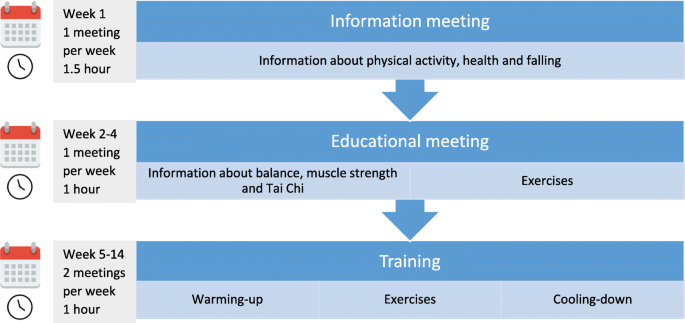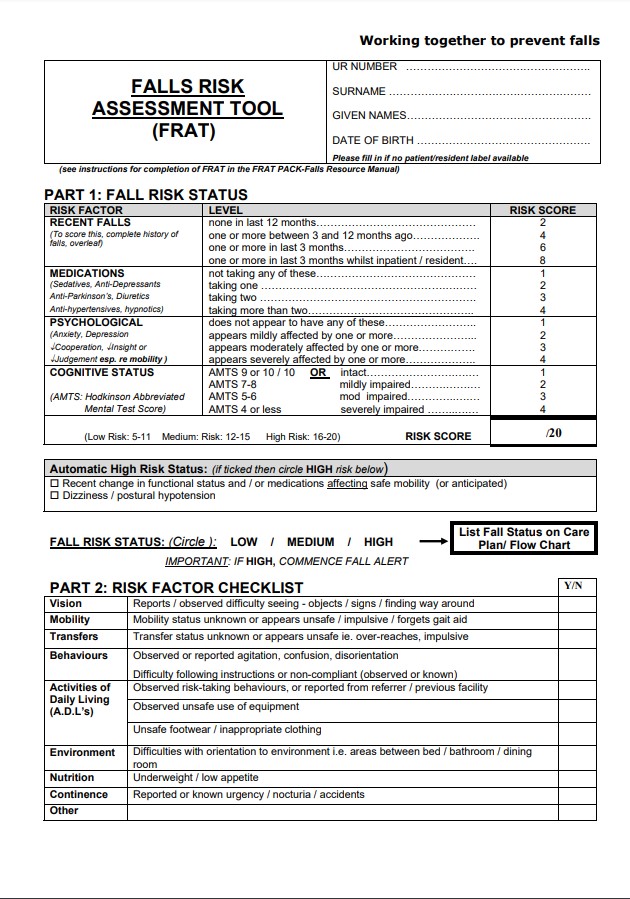The 6-Minute Rule for Dementia Fall Risk
Dementia Fall Risk Can Be Fun For Anyone
Table of ContentsDementia Fall Risk for BeginnersUnknown Facts About Dementia Fall RiskThe Best Guide To Dementia Fall RiskThe Definitive Guide for Dementia Fall RiskNot known Facts About Dementia Fall Risk
You may be nervous due to the fact that you've had a fall before or since you've observed you're starting to really feel unsteady on your feet. You may have noticed modifications to your health, or simply really feel like you're decreasing a little. Whatever the reason, it isn't unusual to become cautious and shed confidence, and this can stop you doing things you used to do and make you really feel more isolated.If you have actually had a fall or you've begun to feel unsteady, inform your doctor even if you really feel great otherwise. Your physician can examine your balance and the method you stroll to see if improvements can be made. They may have the ability to refer you for a drops risk evaluation or to the drops prevention service.
This info can be gotten through interviews with the individual, their caretakers, and a testimonial of their medical records. Begin by asking the private concerning their background of falls, including the frequency and scenarios of any kind of recent falls. Dementia Fall Risk. Ask about any type of flexibility problems they may experience, such as unsteady or problem walking
Conduct a detailed review of the individual's medications, paying specific interest to those understood to boost the threat of drops, such as sedatives or drugs that lower blood pressure. Figure out if they are taking numerous drugs or if there have actually been current adjustments in their drug routine. Review the person's home setting for possible threats that can raise the threat of drops, such as inadequate lighting, loose rugs, or lack of grab bars in the bathroom.
The Best Strategy To Use For Dementia Fall Risk
Guide the individual via the autumn risk assessment kind, describing each question and recording their feedbacks precisely. Ensure that the specific comprehends the purpose of the analysis and feels comfy supplying honest solutions. Determine the complete threat rating based on the actions offered in the analysis type. Establish the individual's threat classification (reduced, medium, or high) based upon the total rating and the presence of automated high-risk condition factors.
This strategy might include exercise programs to boost strength and balance, medicine changes, home modifications, and recommendations to various other specialists as needed. Consistently keep track of the individual's progression and reassess their threat of falls as needed. Customize the treatment strategy based upon changes in their health and wellness standing or home atmosphere. Offer recurring education and learning and support to promote safety and decrease the danger of drops in their day-to-day living tasks.
Many researches have actually revealed that physical therapy can help to minimize the danger of falling in adults ages 65 and older. In a brand-new research (that considered drops danger in women ages 80 and older), scientists computed the economic impact of choosing physical treatment to stop falls, and they found that doing so conserves $2,144, including all the covert costs of your time, discomfort, missed life events, and the bucks paid for solutions.
Getting My Dementia Fall Risk To Work
Examining your heart rate and blood stress measurements at remainder and while you change placements (from sitting or existing to standing). An easy examination of your thinking (cognitive) capacities. Evaluating your equilibrium, strength, and walking capacity. A simple vision examination. Analyzing your feet and footwear. A home safety and security assessment. Based on the analysis results, your physical therapist will develop a strategy that is customized to your particular demands.
Older adults who have problem strolling and chatting at the same time are at a higher danger of dropping. Dementia Fall Risk. To aid increase your safety during everyday activities, your physical specialist might make a training program that will certainly challenge you to maintain standing and walking while you do another task. Examples include walking or standing while counting in reverse, having a conversation, or bring a bag of grocery stores
Your physiotherapist additionally can recognize which tasks you need to stay clear of to remain safe. Community-based drops avoidance programs aid individuals to: Lower their fear of dropping. Establish objectives for boosting their exercise. this link Make their homes more secure. Work out extra to raise their toughness and equilibrium. These programs usually are led by volunteer trains.
The Greatest Guide To Dementia Fall Risk

Measles, or rubeola, is a highly contagious, intense viral transmittable illness triggered by the measles virus. Some individuals consider measles as just a rash and high temperature that gets rid of up in a couple of days; however, measles can cause significant wellness problems, especially in youngsters more youthful than 5-years-old. The most effective defense versus measles is the measles, mumps, and rubella (MMR) this vaccine.
Falls are an usual source of injury among older grownups. According to the CDC, in one year alone, fall-related injuries contributed to over $50 billion in clinical expenses (Dementia Fall Risk). In medical facility settings, older grownups are at specifically high danger of falls due to the fact that their decreased mobility from being constrained to a space or bed.
The 9-Second Trick For Dementia Fall Risk

She has a clinical background of seizure disorder and hypertension. She is obtaining an IV mixture and taking Gabapentin and Lasix. She has no history of falls, her stride is constant, and she voids without any problems. The previous registered nurse states that she calls for support to the shower room when she requires to go.
Examples of typical loss interventions/measures consist of: Ensuring a patient's vital products are available. Placing the person's bed rails up with the alarm system on. Aiding a patient while they're standing my sources up from bed. Beyond understanding just how to make use of the Johns Hopkins Loss Risk Assessment Device, it is necessary that facilities incorporate its usage right into an extra thorough loss avoidance strategy.